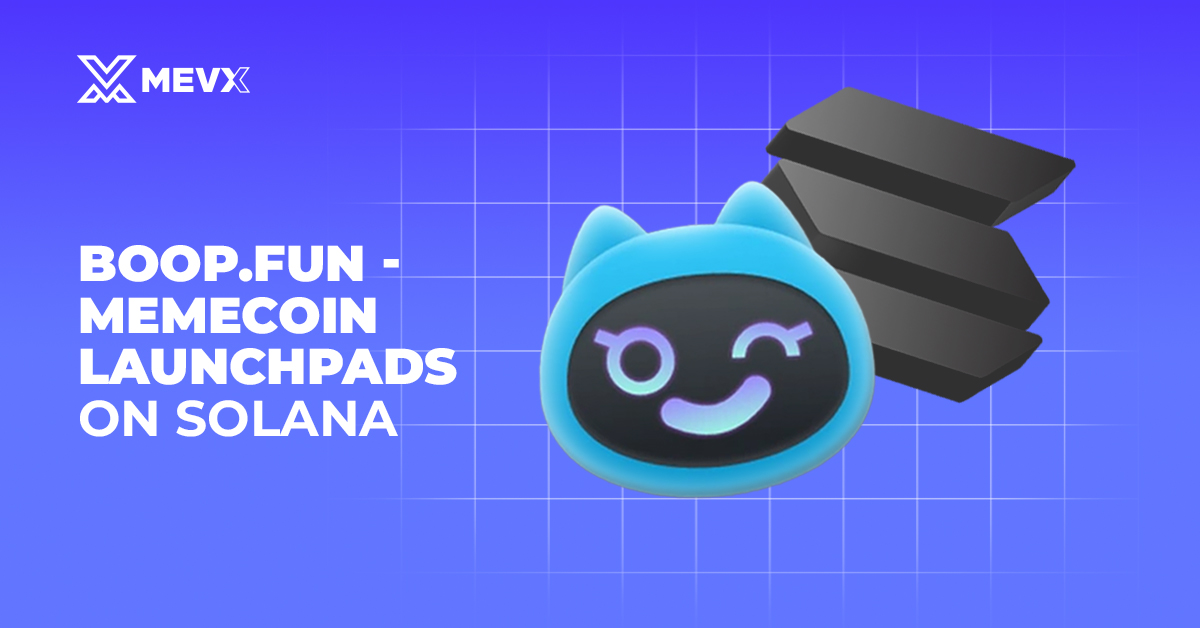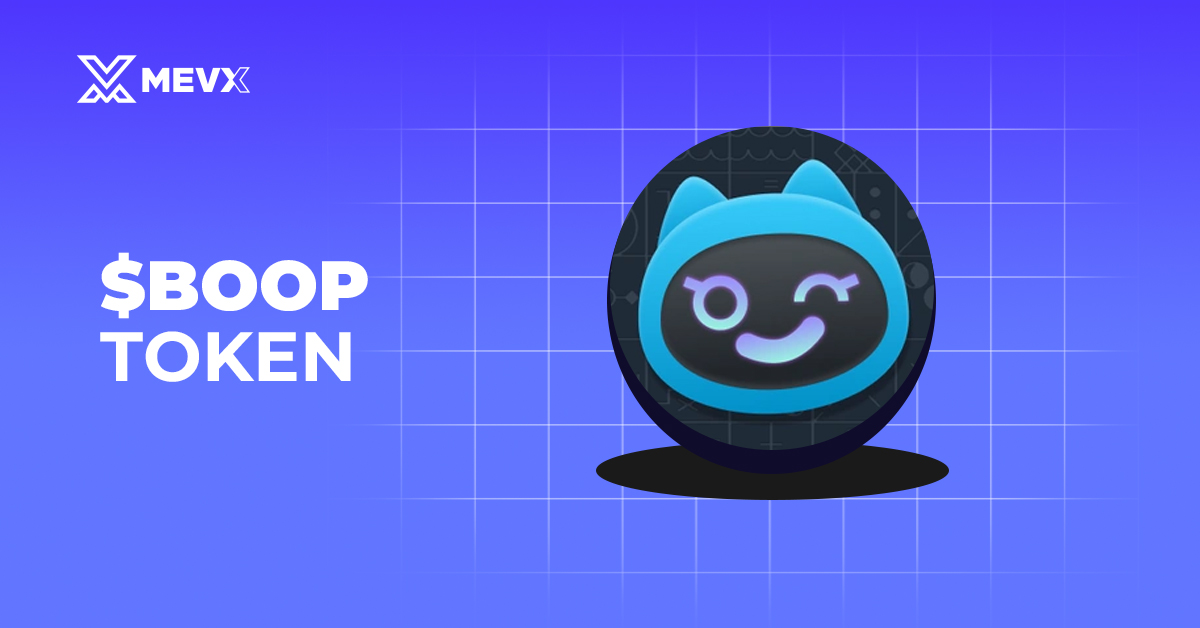Boop.fun, launched in May 2025, is transforming memecoin creation on the Solana blockchain. This decentralized launchpad empowers users to create community-driven tokens, or “cults,” effortlessly, offering innovative airdrop mechanisms, staking rewards, and a native $BOOP token. This article dives into Boop.fun’s features, the $BOOP token’s role, and its growing influence in the crypto market.
What is Boop.fun?
Boop.fun is a decentralized memecoin launchpad on Solana, designed to simplify token creation and foster vibrant communities. Led by Dingaling, a notable NFT figure, and supported by former Binance and PancakeSwap contributors, Boop.fun enables users to launch tokens instantly without complex fundraising. Its dog-themed branding and focus on accessibility distinguish it in the memecoin space.
Emphasizing decentralization, Boop.fun eliminates presales, transaction taxes, and centralized control. Liquidity pools are burned, and smart contracts are renounced, ensuring transparency. With a market cap of approximately $350 million shortly after launch, Boop.fun is a strong contender against platforms like Pump.fun.

Key Features of Boop.fun
Boop.fun’s user-centric design and innovative mechanics appeal to creators and investors. Here are its core features:
1. Effortless Token Creation
Boop.fun enables anyone to create a memecoin, termed a “cult,” in a few clicks. This democratized approach removes technical barriers, allowing creators to focus on community-building. Launched tokens are immediately tradable on Solana’s high-speed blockchain, benefiting from low fees and fast transactions.
2. Airdrop Mechanism
Boop.fun’s airdrop system is a standout feature. It allocates 15% of its $BOOP token supply to reward cult creators, token holders, and social media influencers. Airdrops are distributed via:
Instant Airdrops: Creators whose tokens hit a $5 million market cap receive immediate $BOOP rewards.
Delayed Airdrops: Creators can wait 30 days to receive airdrops without additional conditions.
Using KaitoAI’s analytics, Boop.fun identifies influential X (Twitter) accounts for $BOOP rewards, boosting project visibility. However, the promotion requirement for instant airdrops has raised concerns about potential marketing exploitation.
3. Staking and Rewards
Staking $BOOP tokens offers significant incentives:
- 60% of SOL transaction fees from liquidity pools.
- 5% of the total supply of newly launched tokens.
The “Graduation” mechanism rewards stakers further. When a cult token reaches a 400 SOL market cap, it transitions to Raydium, Solana’s leading DEX, and stakers receive additional $BOOP bonuses. This gamified system drives engagement.
4. Multi-Chain Ambitions
Currently on Solana, Boop.fun plans to expand to Arbitrum and Base, aiming for “omnichain” functionality. This cross-chain compatibility could broaden its reach and enhance DeFi interoperability.
5. Decentralized Ethos
Boop.fun’s decentralized ethos is evident in its tokenomics and governance. With no presales or taxes, burned liquidity pools, and renounced contracts, it minimizes centralized risks. Its canine-inspired branding fosters a fun, inclusive community, encouraging meme-sharing and organic growth.
The $BOOP Token – Powering the Ecosystem
The $BOOP token is the backbone of Boop.fun, driving incentives and enabling ecosystem participation. Below is a detailed look at its role and tokenomics:
Role of $BOOP
$BOOP is a utility token that fuels Boop.fun’s reward mechanisms, staking, and community engagement. It serves multiple purposes:
- Airdrop Rewards: Distributed to cult creators, holders, and influencers to incentivize participation and promotion.
- Staking Incentives: Stakers earn SOL transaction fees and new token allocations, aligning long-term interests.
Governance Potential: While currently focused on utility, $BOOP may evolve to include governance features as the platform matures, giving holders a say in future developments.

Tokenomics
While exact token supply details are subject to ongoing disclosures, key aspects of $BOOP’s tokenomics include:
- Airdrop Allocation: 15% of the total $BOOP supply is reserved for airdrops, targeting creators, holders, and influencers.
- Staking Rewards: A portion of the supply is dedicated to staking, with 5% of new cult token supplies and 60% of SOL fees redistributed to stakers.
- Decentralized Distribution: No presale or private allocations ensure a fair launch, with liquidity pools burned to prevent manipulation.
- Deflationary Mechanics: Burning liquidity pools and renouncing contracts reduce circulating supply over time, potentially increasing $BOOP’s value as adoption grows.
Why $BOOP Matters?
$BOOP’s value proposition lies in its integration with Boop.fun’s gamified ecosystem. By rewarding active participants, it creates a self-sustaining cycle of creation, promotion, and investment. Its utility in staking and airdrops makes it attractive to both speculative traders and long-term holders. As Boop.fun expands to other blockchains, $BOOP’s cross-chain utility could further enhance its demand.
However, $BOOP’s value is tied to the platform’s success and the volatile memecoin market. Investors should monitor adoption metrics, such as the number of cults launched and total value locked (TVL), to gauge its potential.

Memecoins, including $BOOP, are highly volatile and speculative. Investors must conduct thorough due diligence. The platform’s social media promotion requirement for airdrops has sparked concerns about potential manipulation, which could affect credibility. As Boop.fun scales to other blockchains, it must navigate technical and regulatory challenges to maintain decentralization.
Boop.fun is a trailblazer in the memecoin launchpad space, blending accessibility, innovation, and community engagement on Solana. The $BOOP token powers its ecosystem, rewarding participants and driving adoption. With ambitious multi-chain plans and a transparent approach, Boop.fun is poised for growth. However, caution is advised due to memecoin volatility. For those exploring the memecoin frontier, Boop.fun and $BOOP offer an exciting entry point.
Share on Social Media:
